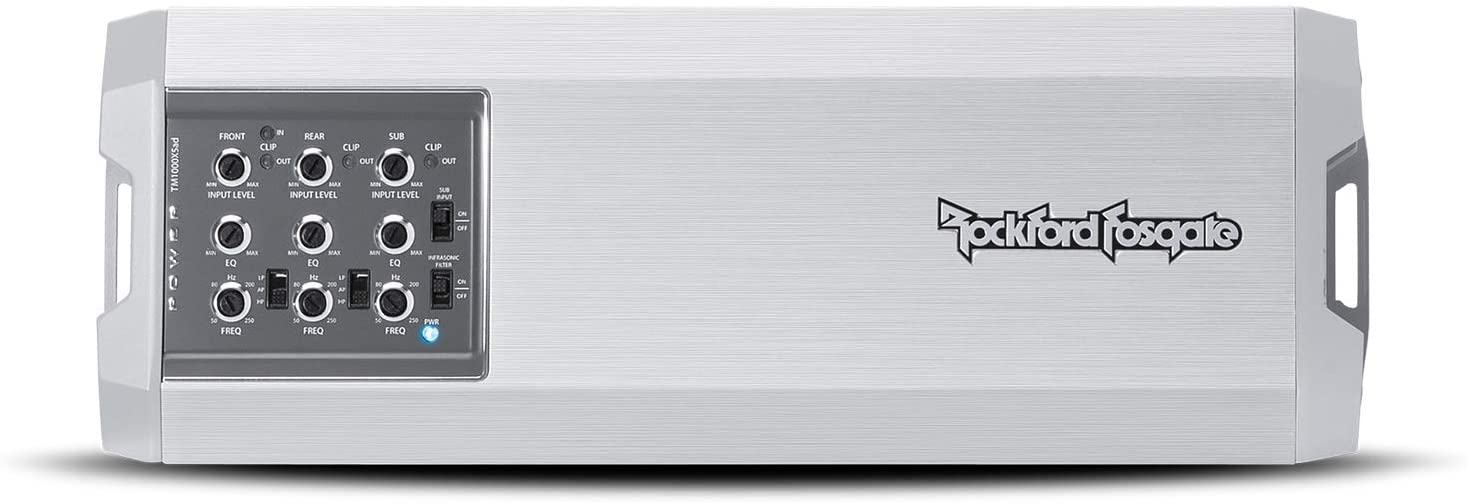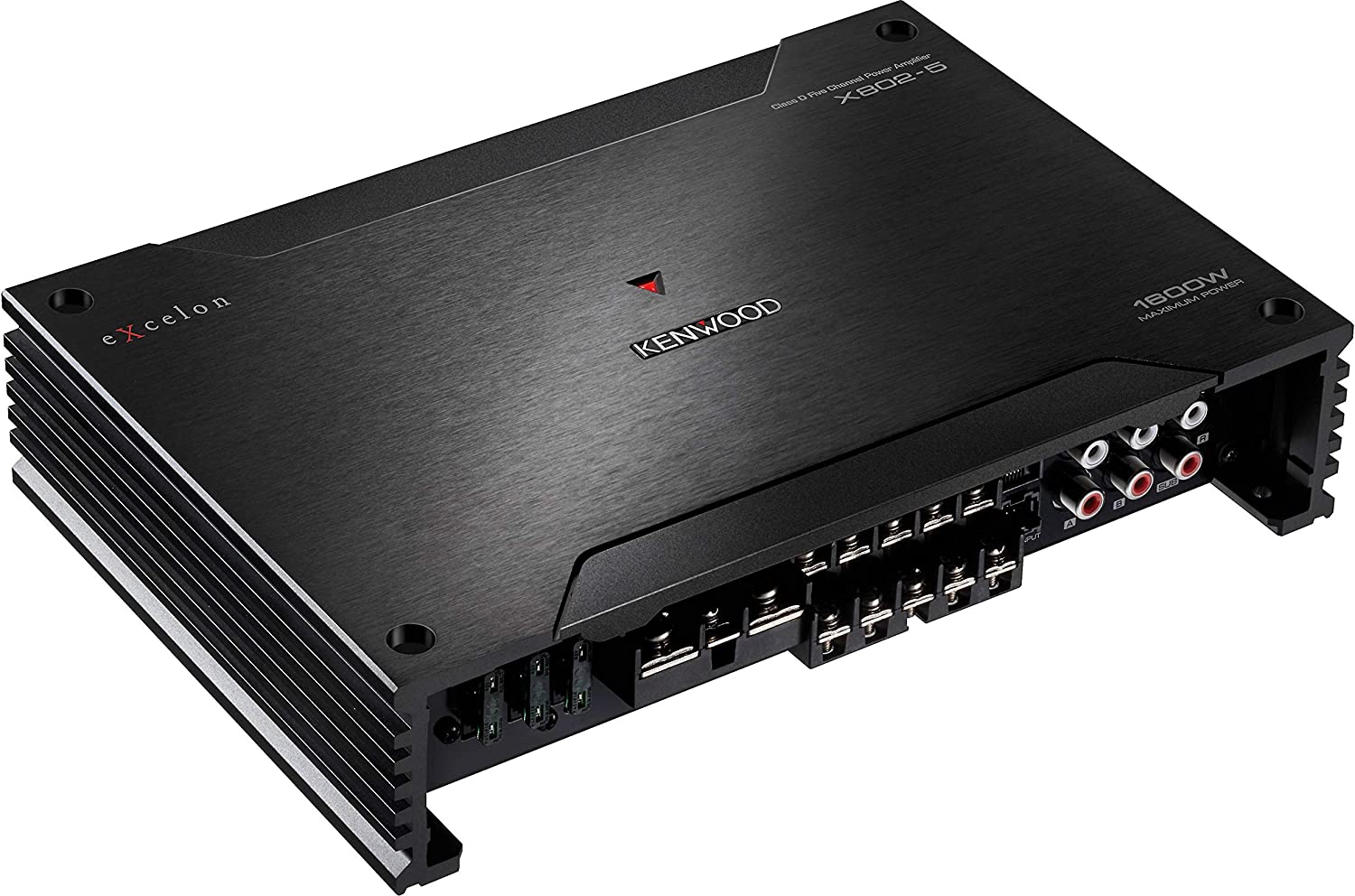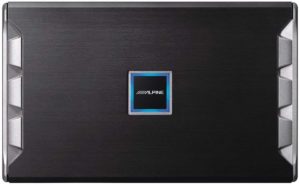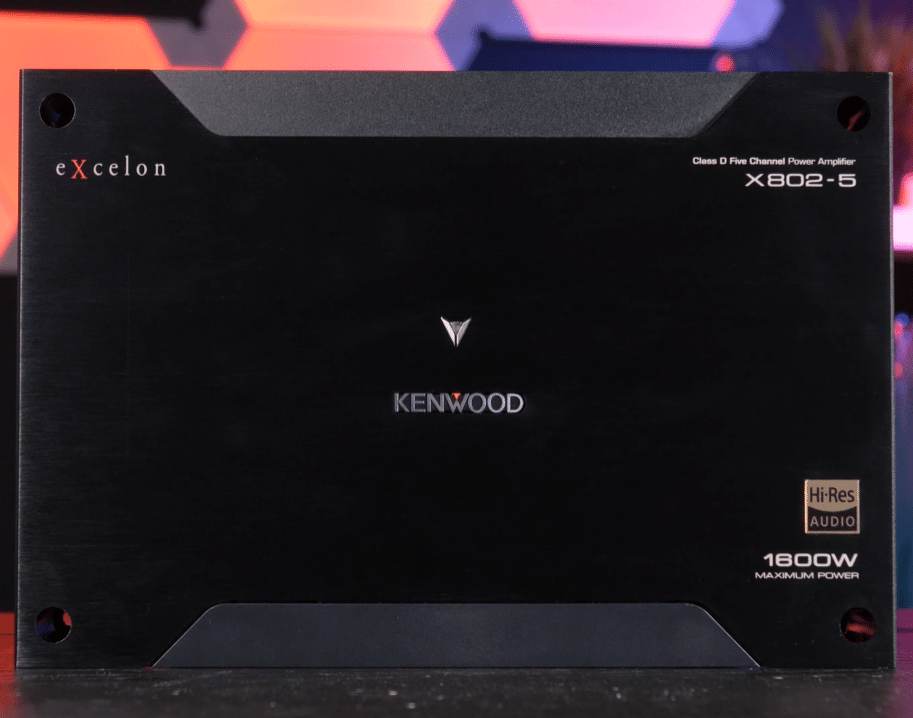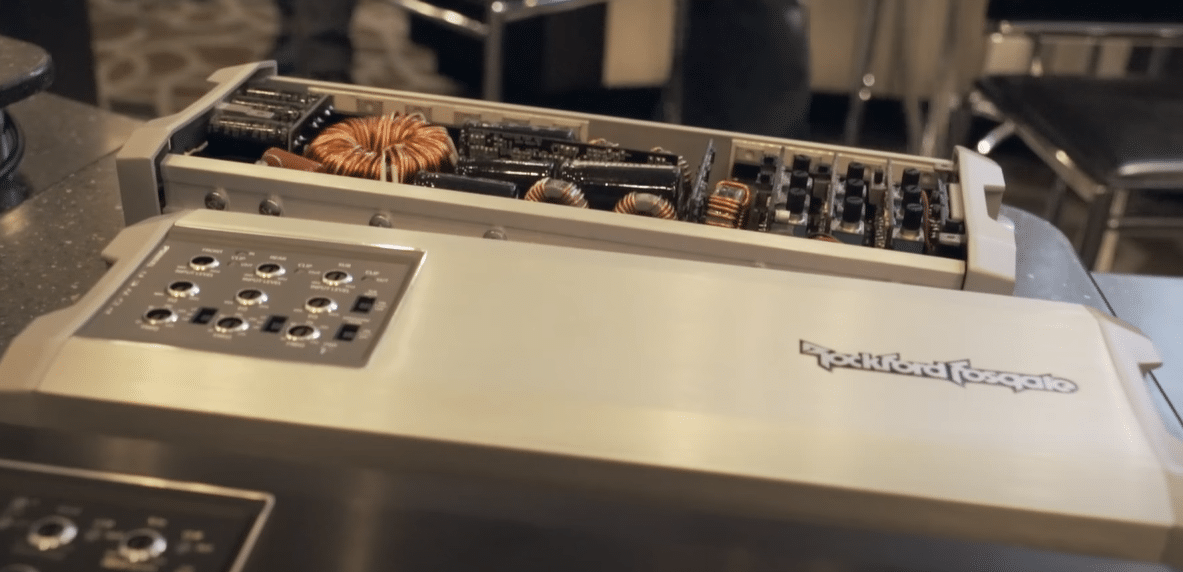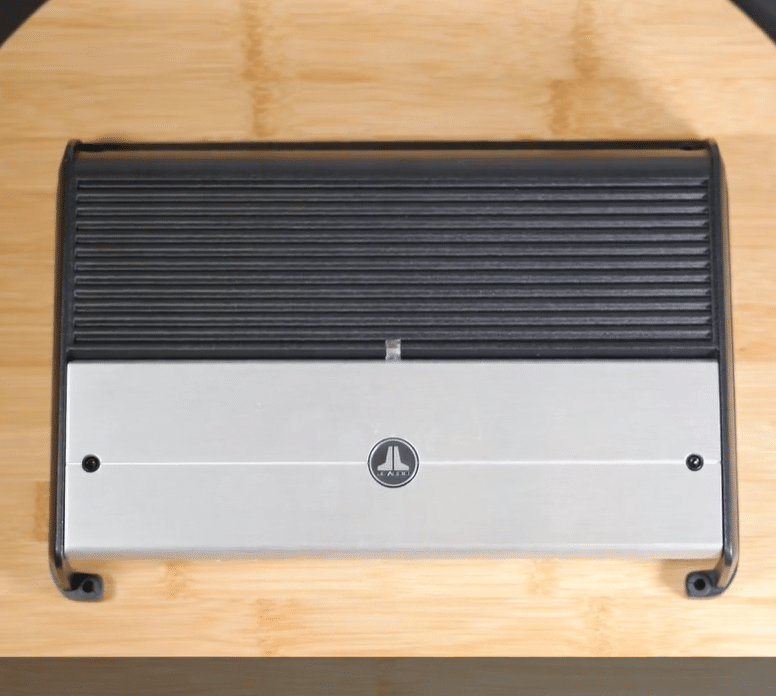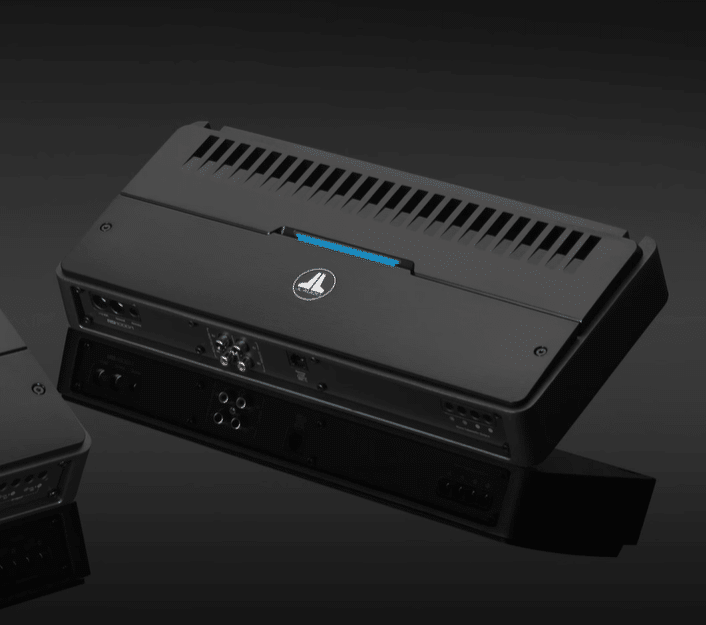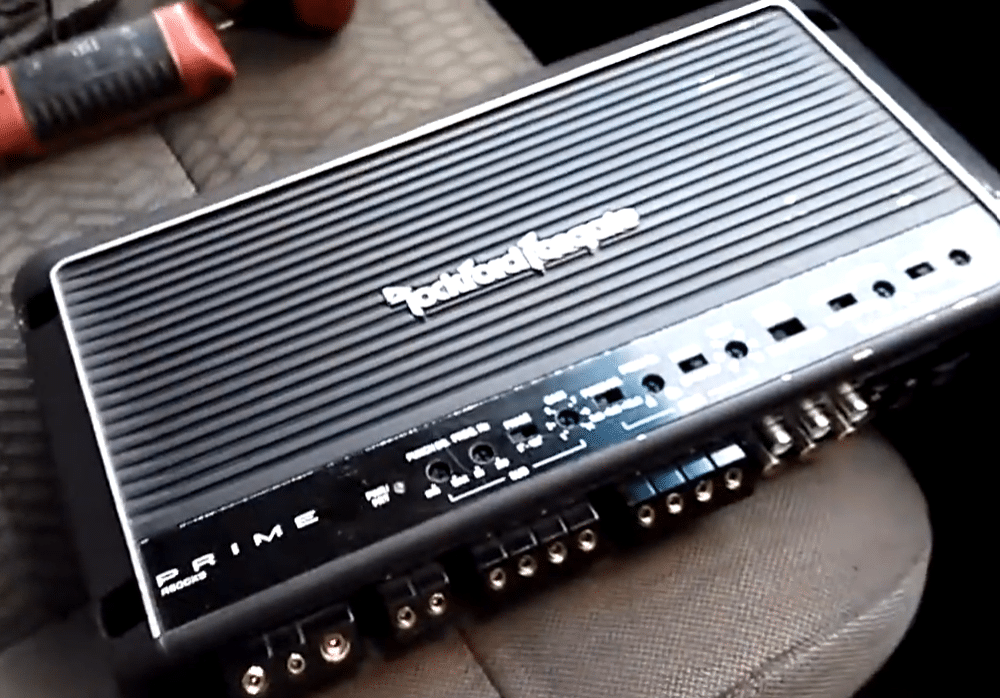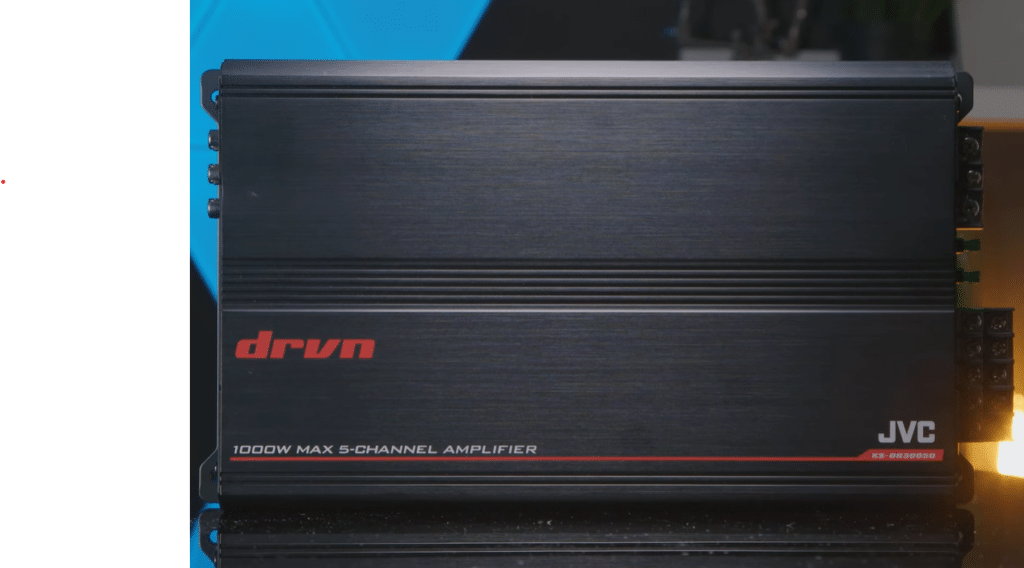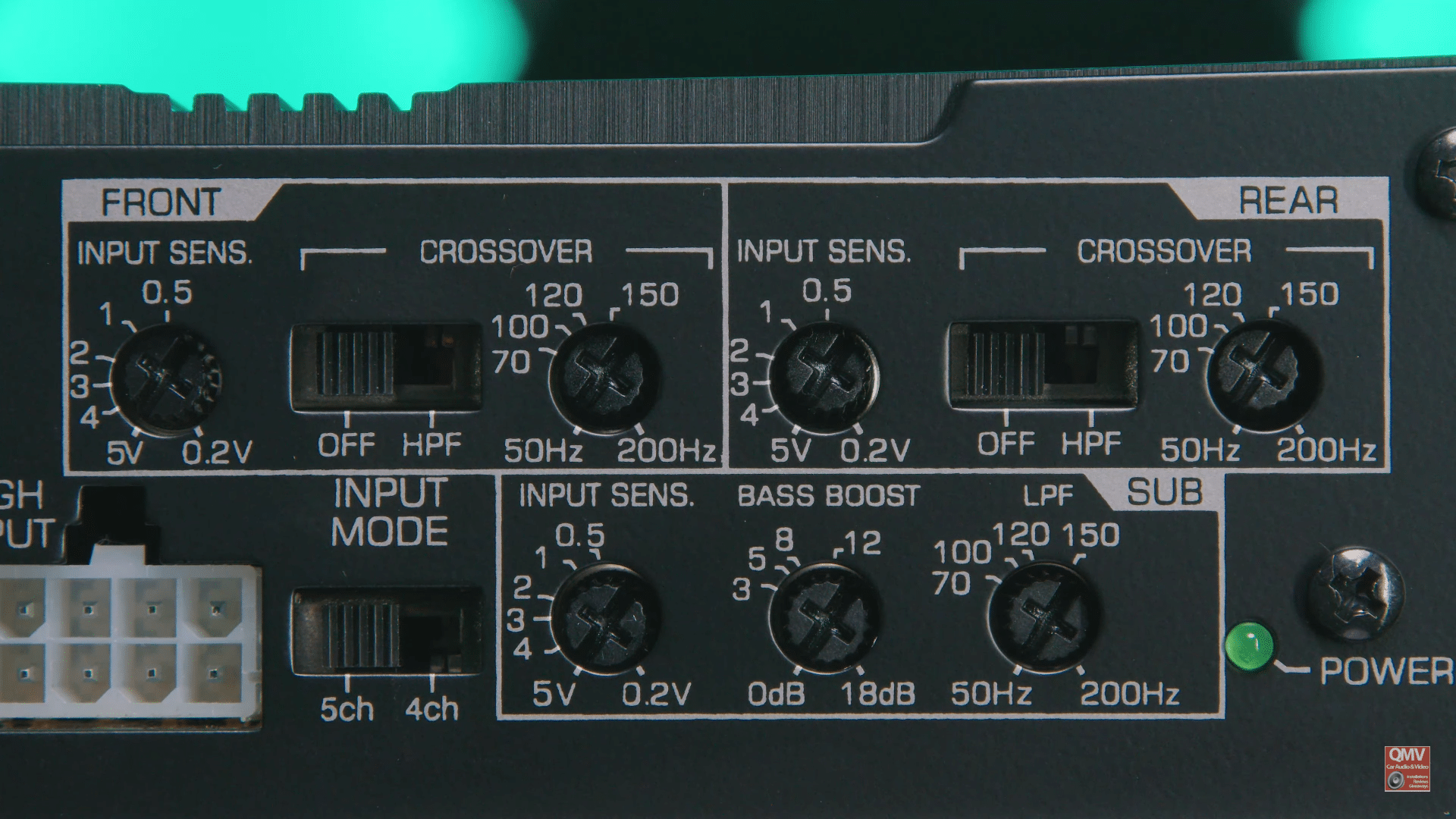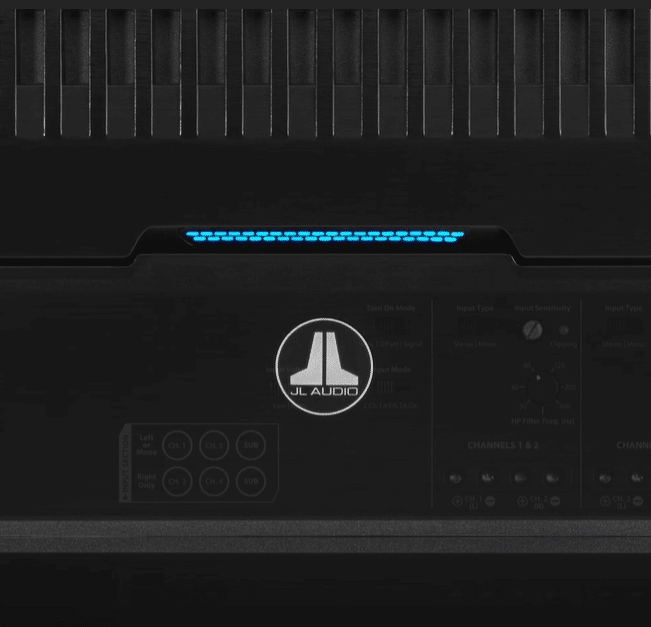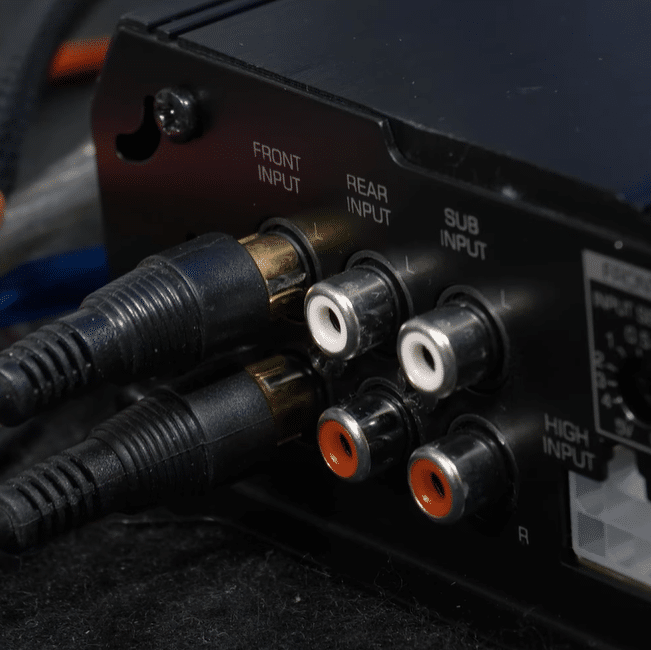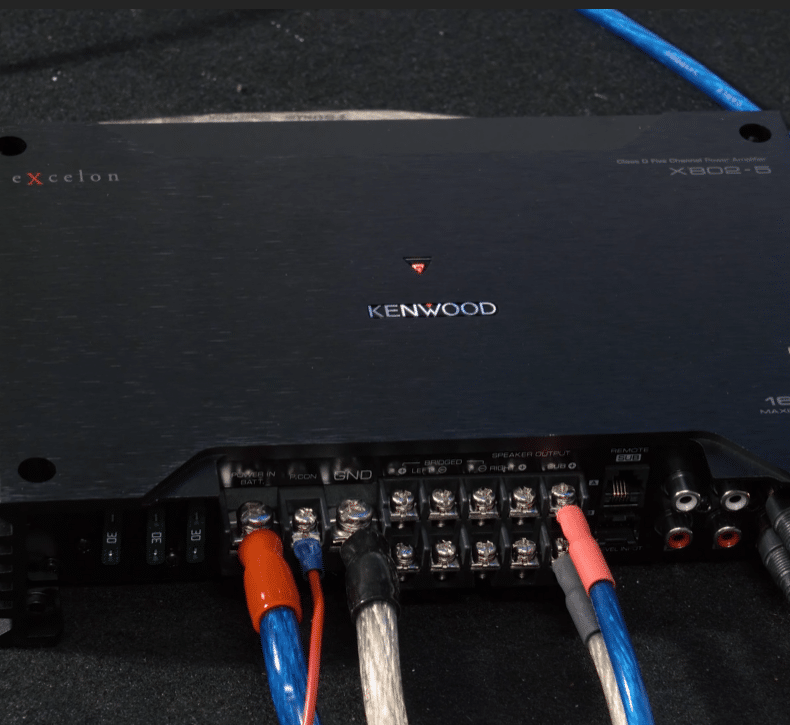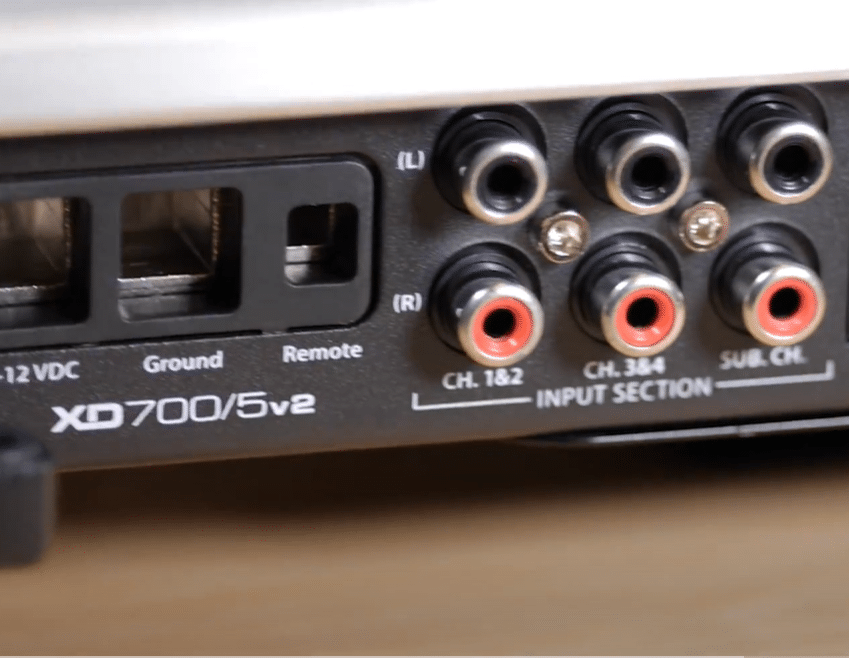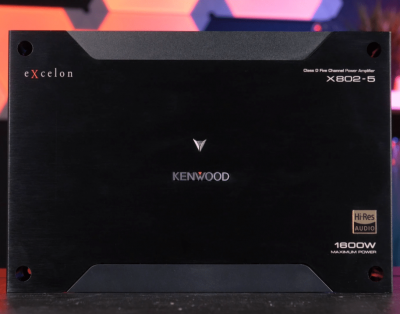-
Willie Greer
- August 16, 2021
A 5-channel amp sounds all-powerful and versatile. Essentially, a 5-channel amp is a hybrid device, fusing all you need in one. But is it all it’s cracked up to be, or will you be swept away by all the advertising lingo? Our team of audio engineers has gone through the best options on the market to curate a list for you.
- 1000 watts of output power
- Constant Power technology
- Class AD tech + Class BD sub
- Small profile
X802-5 eXcelon
- Output coil with magnetic shield
- Detachable sliding terminal
- CEA-2006 compliant
- Auto-sense turn on
PDR-V75
- Variable high pass filter
- Variable low pass filter
- MOSFET power supply
- CEA-2006 compliant
Reviews of the Top 5-Channel Amps
Kenwood X802-5 eXcelon
The sleek Kenwood eXcelon X802-5 is a 5-channel amp that delivers sound quality that exceeds CD standards. The output coil on the amp is magnetically shielded, which suppressed the magnetic flux from coming off of the sub’s coil. All this means virtually no noise and improved audio.
The 5-channel amplifier also comes with a sliding terminal cover not only for visual appeal but also for protection and clean installation. The class D amp can handle analog and digital connections and auto-sense turn on with the speaker level input.
The CEA-2006 compliant amplifier follows stringent standards, which makes buying and comparing easier for the consumer.
What We Like
- CEA-2006 compliant
- Gives your car audio system a boost
- Magnetically shielded output coil
- Terminal cover
- Speaker level input harness
- Class D technology
- Analog, digital, and power supply circuitry divided
- Auto-sense turn on with speaker level inputs
What We Don’t Like
- Can feel a little warm over long periods
- Not much tuning
Rockford Fosgate TM1000X5ad
It has a high price point, but the Rockford Fosgate TM1000X5ad brings a whole lot of power to your front and rear system. The small and compact 5-channel amplifier doesn’t take up much space and can bring 1000 watts of power. A class A/D amp, the TM10005ad is one of the Rockford Fosgate brand’s “Constant Power” amps that bring more wattage.
The amplifier features proprietary technology that combines class AD technology and BD sub. The high level inputs have an auto turn-on feature with an onboard punch EQ. The RMS Power Output: 100 Watts x 4 and 4 ohms bridged.
What We Like
- Rockford Fosgate proprietary technology
- Famous Rockford Fosgate build quality
- High-level auto turn-on function
- Constant Power efficiency
- Small and compact
- Sleek silver exterior
- Clean technology
- Marine-rated Rockford Fosgate amplifier
What We Don’t Like
- Can get a bit warm over time
- May require an extra power harness
Alpine PDR-V75
Alpine amplifiers are gorgeous on the outside and powerful on the inside, and the PDR-V75 is no exception to the brand’s standards. The brushed black exterior comes with an illuminated logo plate on the surface to add to the visual appeal. You can find variable high and low pass filters on the 5-channel car amplifiers, plus a subsonic filter and a variable bass boost.
To make setup and connection even easier on the average consumer, the Alpine PDR-V75 comes with preamp and speaker level inputs. The class D amp is highly efficient and has the MOSFET power supply.
The beautiful amp is also CEA-2006 compliant for added consumer reassurance.
What We Like
- Variable high and low pass filters
- Subsonic filter
- Variable bass boost
- Class D 5-channel car amplifier
- PDX Technology
- Sleek exterior
- Voltage on/off sensor
- Built-in crossover
- Bass EQ adjustment
- CEA-2006 compliant
- Good price
What We Don’t Like
- Low sub volume
- Can run a bit warm over time
JL Audio XD700/5v2
The JL Audio XD700/5v2 offers an RMS power of 75 watts RMS x 4 + 180 watts RMS x 1 at 4 ohms and 100 watts RMS x 4 + 300 watts RMS x 1 at 2 ohms. The 5-channel amp makes reading easy with small light indicators so you know exactly which mode it is in.
The class D amp has high-speed switching and advanced rollback protection. There is even auto-sensing turn-on for your convenience without a remote. A big problem for even the best 5-channel amplifier is high temperatures during operation.
This is why the durable aluminum alloy heat sink for heat dissipation is such a valuable feature.
What We Like
- Excellent heat dissipation
- Auto-sensing turn on
- Advanced rollback protection
- Class D high-speed switching
- Light indicators
- 3-way protection circuitry
- Selectable filters
- 180 watts RMS x 1 at 2 ohms
- 300 watts RMS x 1 at 4 ohms
What We Don’t Like
- Can be a bit large for some car seats
- Clamp wire holders
JL Audio RD-900/5
Our expert engineering team has chosen another JL Audio 5-channel amp as the next option on the list. It’s another class D car amplifier with 75 watts RMS x 4 at 4 ohms and 100 watts RMS x 4 at 2 ohms with one extra channel for both ohm settings. The max power output is a whopping 1800 watts!
The JL Audio RD-900/5 is another CEA-2006 compliant 5-channel amp from JL Audio. There are LED clipping indicators to make sure you always get the best sound quality. Plus, there is a MOSFET power supply.
The aluminum heat sink helps greatly with heat dissipation, so high temperatures are not an issue.
What We Like
- Highly efficient 5-channel amplifier
- Aluminum heat sink for heat dissipation
- MOSFET power supply
- JL Audio CEA-2006 compliant
- High power output
- Class D amplifier
- Variable bass boost
- Soft start turn on
What We Don’t Like
- Less power from subwoofer channel
- Is a bit pricey for some
Rockford Fosgate R600X5
The Rockford Fosgate R600x5 Prime is in a league of its own as far as 5-channel amps go. The car amplifier takes speaker level and RCA inputs, and the top mount controls make it easy to set the unit with the rest of your system.
High temperatures are also a non-issue with the Rockford Fosgate R600x5. As far as 5-channel amplifiers go, it features a very efficient thermal management system with a cast aluminum heat sink.
As for the power, you get 50 Watts RMS x 4 + 200 Watts RMS x 1 at 4-Ohms / 75 Watts RMS x 4 + 300 Watts RMS x 1 at 2-Ohms.
What We Like
- Extra subwoofer channel
- 4-gauge power connectors
- 12dB crossover
- MOSFET power supply
- Cast aluminum heat sink
- Top mount controls
- Class AB and Class D technology
- Overcurrent and shortage protection
- Onboard punch EQ control
- Gain control
- Up to 300 watts x 1 at 2 ohms
- 200 watts x 1 at 4 ohms
What We Don’t Like
- May run hot over long hours
- Remains in protect mode
JVC KS-DR3005D
Lastly, our engineering team chose the JVC KS-DR3005D as another model for our best 5-channel amp list. As a 5-channel amp, you will be able to bridge 2 channels for a subwoofer to bring even more max power output.
The Toroidal Transformer power is not only a cool-sounding technology, but it can improve the sound quality output from the amp without distortion. The installation is with speaker level inputs that also give the 5-channel amp the ability to turn on automatically when it senses a signal.
The RMS power is 60w x 4 at 4 ohms, 90w x 4 at 2 ohms, and 180w x 2 bridged at 4 ohms.
What We Like
- 2 bridgeable channels
- Toroidal Transformer
- Signal-sensing turn on
- Durable build
- 80dB sound pressure level
- Decent power
- Compact and durable
What We Don’t Like
- Installation may take a while for some
- Warranty will vary from country to country
5-Channel Amps Buyer’s Guide
A 5-channel amplifier is usually more versatile than its 4-channel counterpart. Like with most products, the end performance depends on your choice and the inner specs. Our sonic experts have created a quick checklist to help you find the best 5-channel amp available.
Power Rating
The power rating is a huge consideration for a 5-channel amplifier. It’s definitely one of the more important ones, which is why it’s the first one on the list. Unlike speakers and subs, an amplifier is advertised with RMS power. The RMS or root mean square is measured in watts.
The max power is the total watts of RMS power from each channel combined. Is a higher wattage output always better? Usually, yes. If you had to pick, you should overpower instead of underpowering your stereo system. You don’t want to damage your car audio system and have to put up with subpar sound with an underpowered sound system.
For a 5-channel amp, you’re looking at anywhere between 600 to 1000 watts of RMS power on average. Of course, there are amps out there that can reach far above that, with the JL Audio model on our team’s list as a great example of that.
Our team members remind our readers that the watts RMS rating will also differ depending on the impedance. A 5-channel amp has either 2 ohms or 4 ohms impedance. In general, the higher the impedance, the lower the watts per channel.
For example, if you have a 100w RMS x 4 plus 200 watts x 1, it will no longer be 100w RMS x 4 at 2 ohms. Instead, you may end up with something closer to 75w x 4 plus 300 watts x 1. For those that don’t know, the RMS x 1 is the extra sub channel.
The power is a significant differentiator between 5-channel amps, so make sure you take extra care when selecting the right one. One tip that will ensure a satisfactory result is to look for ones with CEA-2006 certification. The best 5-channel amps will have gone through the testing standards of the Consumer Electronics Association.
A 5-channel amp with approval from this organization will ensure the power wattage output from your device is as close to advertised as possible and there is no misrepresentation.
Impedance
We briefly touched on the impedance in the previous section, and now our audio experts will go into more detail. The impedance rating is the measure of electrical resistance from your 5-channel amp, and it is measured in ohms. 5-channel models usually come with 2 ohms or 4 ohms.
Your choice will be largely dependent on your audio system and sub. You need an amplifier with an impedance that matches your sound system for seamless compatibility. Should you go for 2 or 4 ohms? In general, the lower the impedance rating, the easier it will be on your 5-channel amp.
A lower impedance means your amplifier won’t have to work as hard to power the other components of your stereo system.
Signal to Noise Ratio
The signal to noise ratio, or SNR for short, refers to the noise carried over by your amp. This particular rating is measured in decibels [1], and the higher the rating, the better. Our experts suggest a rating of at least 90 dB to be a good pair for the rest of your sound system. However, if you can find ones that offer an SNR over 100 dB, then your audio system will sound better than ever.
It’s nearly impossible to eliminate background noise altogether from the amp to your front and rear speakers, but we can attempt to reduce it as much as possible. The gain settings can help lower the noise emissions, so try to keep that at a minimum.
THD
A primary factor that will influence the sound quality regardless of the amp price point is the THD or total harmonic distortion. To have a high-performing 5-channel amp, you want the THD to be as low as possible, even at high volumes and peak power output.
It may sound like wishful thinking, but it is possible with excellent amps. As you can imagine, the lowest possible figure, which is measured in percentages, is what you should strive for in your car stereo system. A 5-channel car amp can deliver THD lower than 1% at the very least. Our professional team says that this is the most you should accept.
Regardless of the power, you should only settle for total harmonic distortion under 1% if there are no better options. Luckily, there are 5-channel amps out there that can offer barely detectable THD at 0.05%! Remember, the lower the percentage, the better, and nothing is too low for your car stereo system.
Amplifier Class
The topology of the amp is the amp class. Class A/B and D amps are the most common, and which one you choose will affect the quality of the amp performance. As far as audio quality goes, the difference between class A/B and D amps is barely noticeable. Class A/B amps produce better sound, but excellent class D amps are the more efficient models. This is just a generalization, but it’s a common thread in most units.
Even the most passionate audio lovers won’t be able to discern a great difference between class D and class A/B amps. One thing that we can all agree on is class A/B amps are usually larger and run much hotter and are less efficient. These are compromises you have to make for slightly better audio quality.
There is a way to combat high heat with an excellent and effective heat management system. Make sure your 5-channel amp has a way to dispel the heat to prolong its lifespan and performance. Class AB amps are usually larger, which means placement options are limited.
You may not have to choose between the amp classes because some 5-channel amps combine the technologies from both.
Size and Compatibility
The class of your amp will affect the size, but it’s also important to consider the measurements in accordance with the placement. You have to make sure the amp fits, or you won’t get to enjoy enhanced car audio.
5-channel amps can come in very compact sizes, which won’t give you too much trouble in terms of placement and setup.
Is the amp compatible with the rest of your car audio system? More specifically, how does the amp work with the head unit? This is where the inputs come in. You will most often see high level inputs, low level inputs, and RCA. Check to see which one works with your system.
(Lacks input connections in your amps? Well, we have this guide on hooking up your amplifier without the use of RCA jacks)
Installation
No one wants an amp that is difficult to set up. Especially with a separate subwoofer channel, you may have a lot more to consider during the installation. The best 5-channel car audio amp will definitely be easy to set up and comes with all the required wiring. The manual should be easy to read and understand as well.
When assessing each of the 5-channel amplifiers on the list, our experts were surprised by how much they appreciated the placement of the terminals. It’s better if they are all on one side with easy access. It really made the setup easier.
Bridgeability
What is “bridging”? It’s obvious that a 5-channel amp is designed to run four speakers and a subwoofer. It’s superior to a 4-channel amp due to an extra subwoofer channel. Bridgeable units can work with a 3-channel system. In a nutshell, bridging is when you combine two channels into one to boost the power output to that single channel.
Is bridging necessary? No, it isn’t, but there is no debate about the extra flexibility and versatility a unit that can bridge provides. If you feel like adjusting your system or adding to it in the future, you have the option to do so.
Most modern amps do offer bridging, and they will state that in the power rating section. Keep in mind that bridging may alter the power output.
Extra Features
One extra feature that a 5-channel amp has that a 4-channel does not is an extra subwoofer channel. You know it’s a 5-channel amp when you see an RMS x 1 rating. Extra features in an amp can sometimes make or break your decision.
Our professional team mentioned heat management systems, especially in a class A/B amp. In our professional opinion, this is an extra feature that is desirable in any amp.
You may have noticed that a big complaint about many amp models is the heat generation. You can’t expect your amp to be cool to the touch, and it’s natural for it to run a little warm after long hours at peak power.
However, it shouldn’t be very hot. Good airflow and an effective heat venting system are crucial to a high-performing 5-channel amp.
Speaking of high power, finding a unit with protection circuitry will also add a level of safety. An amp with a high power rating should have short, thermal, and voltage protection built in. The protection mode should also help the amp stay cooler.
You may also find a subwoofer remote to control the watts to your sub, among other things. As far as turning on your amp, many with high level inputs have auto-sense turn on, which will automatically activate your amp when it detects a signal.
The next bonus features you should look for will impact the audio quality. We are talking about a bass boost, variable high and low pass filters, and whether the amp is considered full range. Most 5-channel amps are full range and can hook up to speakers and subs. A full-range model is excellent for delivering the entire sound spectrum at boosted signals.
The high and low pass filter in a 5-channel amp will allow certain frequencies to pass through to the right components. The HPF will allow the high frequencies to go to the speakers, and the LPF will push the mid-bass and low notes through to the subwoofer.
Also, pay attention to the frequency response, which will also affect your audio experience. The human audible range is within 20Hz to 20kHz, which means you don’t necessarily need to look for a frequency response that exceeds that. However, ones that do may not offer an audible difference, but it will definitely be a variance you can feel.
You can find units with a frequency response of 15 Hz to 35 kHz, which is a good range. There are even amp models that can offer a frequency response of up to 50 kHz! Again, the frequency response that exceeds our audible range won’t make too much of a difference. But paired with a high RMS power rating, you will get amazing car audio.
What is a 5-Channel Amp?
A regular sound system will require you to hook up a 4-channel or lower amp with a monoblock amp for the sub to power your entire setup. With a 5-channel amp, you get a hybrid of the above in a single unit. This means there is no need for 2 amps, just one device to power it all.
That’s why our team said that 5-channel amps could feature a fusion of class AB and D technology into one chassis. The 5 channels in your amp consist of 4 regular speakers and one dedicated channel to bring the watts to your sub.
Another major benefit to a 5-channel amp is the cleaner setup because it doesn’t require more than one device.
Why Use a 5-Channel Amplifier?
5-channel options are very convenient and have slowly gained traction over the years. They offer more power and take up less space, and you can get over 100 watts x 4 channels depending on your impedance.
In fact, our team has seen 200 watts RMS for the sub channel alone. Since a 5-channel option is a combination of a monoblock and a 2 or 4 channel amp, it requires less space in the cabin of your car. Then there is the excellent sound delivery due to the merging of class AB and D technology. Think of everything a 4-channel amp gives you plus much more, and you will get a 5-channel amp.
(For other great products, we also have high-quality subwoofer plate amplifiers here)
FAQ
Are 5 channel amps any good?
Yes, 5-channel amps are good. The best 5-channel car amp can give you the best installation with even better delivery. These amps are a fusion of two technologies to create a system that has a dedicated subwoofer channel. They also require less space due to the compact profiles.
How many speakers can a 5 channel amp power?
A 5-channel amp can power up to 4 speakers with a separate dedicated channel for a subwoofer. Some 5-channel amps are bridgeable, allowing you to combine two channels to boost the power and accommodate various setups such as a 3-channel system.
What are 5 channel amps used for?
5-channel amps are used for whole system amplification. It can power 4 speakers and one subwoofer with the 5 channels. You will be able to boost the power of your entire car audio system. It fuses class AB and D technology into one system for a smaller footprint.
Our Top Pick For a 5-Channel Amp:
Kenwood eXcelon X802-5
Our sonic engineers have picked the Kenwood eXcelon X802-5 as the best 5-channel amp. It has everything you are looking for in a 5-channel amp with a built-in bass boost, low and high pass filters, and power output at up to 500w x 1 for your sub alone. It’s a bridgeable model with a sturdy and durable build that will last for many years.
If you are still in search of other great devices, you can also check our list of products below:

